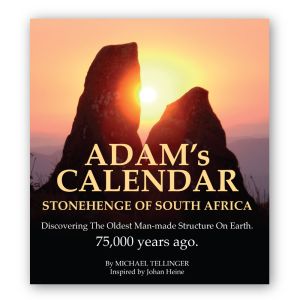Adam’s Calendar

Adam’s Calendar is controversially suggested to be the oldest man-made structure in the world. Sometimes referred to as "African Stonehenge", it predates both Stonehenge and the Great Pyramid of Giza by tens of thousands of years. Located in Mpumalanga, South Africa it is a standing stone circle about 30 meters in diameter and has been estimated by some accounts to be more than 75,000 years old. Various astronomical alignments have been identified at the site and it is possibly the only example of a completely functional, mostly intact megalithic stone calendar in the world.[1][2]
Here are some key points about Adam’s Calendar and its significance:
- Age: Adam’s Calendar is estimated to be over 75,000 years old, making it one of the oldest known structures built by humans. This challenges the conventional timeline of human civilization, as it suggests that complex stone structures were created much earlier than previously believed.
- Stone Alignment: The site consists of a circular arrangement of stones, with several upright monoliths aligned to specific celestial markers. These stones are believed to have been positioned deliberately to align with the solstices and equinoxes, indicating a sophisticated understanding of astronomical phenomena.
- Archaeoastronomy: Adam’s Calendar provides valuable insights into the ancient people’s knowledge of astronomy and their relationship with the cosmos. The alignment of the stones suggests that the builders possessed advanced astronomical knowledge and used it to mark significant celestial events in their calendar.
- Cultural Significance: The site holds cultural and spiritual significance for the local indigenous people, who consider it a sacred place. It is believed to be a powerful energy center and a site of ancient ceremonies and rituals. The local community continues to honor and protect the site, preserving its cultural heritage.
- Controversies and Alternative Theories: Some researchers and alternative theorists propose that Adam’s Calendar may not be a mere calendar but rather a more complex and advanced structure, possibly serving as an ancient astronomical observatory or even a portal to other dimensions. However, these theories are highly speculative and not widely accepted within the scientific community.
Adam’s Calendar is an extraordinary archaeological site that challenges our understanding of human history. Its age, alignment with celestial markers, and cultural significance make it an important landmark in our quest to unravel the mysteries of ancient civilizations.

The co-authors of the book, Michael Tellinger and Johan Heine, have extensively researched and explored Adam’s Calendar, aiming to shed light on its origins and purpose. They propose that the structure was built by an advanced ancient civilization that possessed knowledge and technology far beyond what is commonly attributed to early humans.
It is important to note that the term “Adam’s Calendar” is a modern name given to the site due to its alignment with the summer solstice, which occurs around the time of Adam and Eve’s creation in biblical mythology. The actual purpose and significance of the structure remain a topic of speculation, with some theories suggesting that it could have served as an astronomical observatory or a place of spiritual significance.

